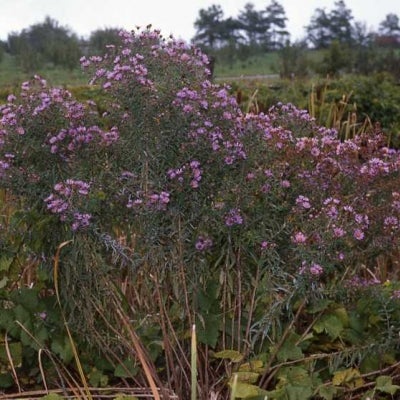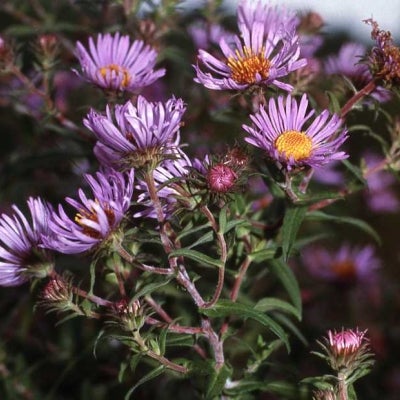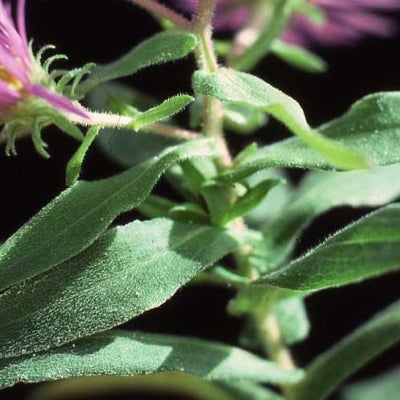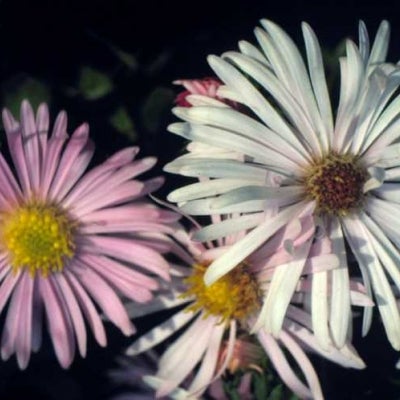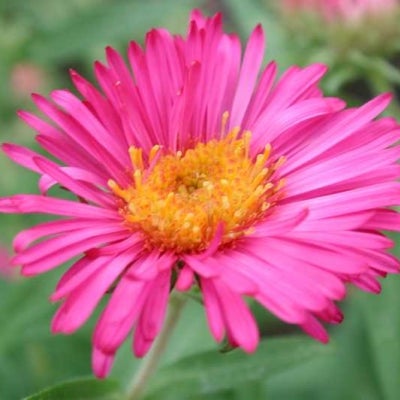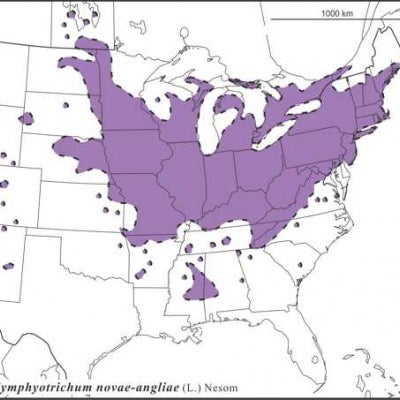Department of Biology
ESC 350
200 University Ave. W
Waterloo, Ontario, Canada N2L 3G1
Phone: (519) 888-4567 ext. 32569
Fax: (519) 746-0614
New England Aster, Michaelmas Daisy, aster de Nouvelle-Angleterre
Symphyotrichum novae-angliae (L.) G.L. Nesom is native to open, moist to wet, sandy or loamy, rich soils, fields, prairies, meadows, marshy grounds, shrubby swamps, fens, shores, thickets, moist edges of woods, roadsides, railroad rights-of-way (i.e., somewhat weedy) from Manitoba to New Brunswick south to Oklahoma across to Georgia with disjunct populations in Wyoming, Colorado and New Mexico (Brouillet et al. 2006 FNA). The species is distinguished by its thick woody branching rhizomes, oblong or lanceolate, moderately to densely short-soft-hairy, sparsely to moderately stipitate-glandular leaves with auriculate-clasping bases, heads with subequal attenuate and densely dark stipitate glandular phyllaries and (40–)50–75(-100) narrow showy rays that are usually violet purple but can be pink or white. The species is diploid with x=5 (2n=10) throughout its range with single reports of triploid and tetraploid counts from Illinois (Semple 2004). The species is very common in many parts of its range and is the most frequent purple rayed aster in fields and along roadsides in Ontario and the northeastern U.S.
The species is introduced in Europe and in scattered locations in the western U.S. and Canada (probably from escaped cultivars). Many cultivars are offered in the nursery trade.
Semple, J.C. 1984. Cytogeographic studies on North American asters. I. range surveys of Virgulus adnatus, V. concolor, V. georgianus, V. grandiflorus, V. novae-angliae, V. oblongifolius, V.patens, and V.walteri. Amer. J. Bot. 71: 522-531.
Last updated 23 February 2014 by J.C. Semple
© 2014 J.C. Semple, including all photographs unless otherwise indicated
